Fiber-specific structural properties relate to reading skills in children and adolescents
- PMID: 36576253
- PMCID: PMC9815823
- DOI: 10.7554/eLife.82088
Fiber-specific structural properties relate to reading skills in children and adolescents
Abstract
Recent studies suggest that the cross-sectional relationship between reading skills and white matter microstructure, as indexed by fractional anisotropy, is not as robust as previously thought. Fixel-based analyses yield fiber-specific micro- and macrostructural measures, overcoming several shortcomings of the traditional diffusion tensor model. We ran a whole-brain analysis investigating whether the product of fiber density and cross-section (FDC) related to single-word reading skills in a large, open, quality-controlled dataset of 983 children and adolescents ages 6-18. We also compared FDC between participants with (n = 102) and without (n = 570) reading disabilities. We found that FDC positively related to reading skills throughout the brain, especially in left temporoparietal and cerebellar white matter, but did not differ between reading proficiency groups. Exploratory analyses revealed that among metrics from other diffusion models - diffusion tensor imaging, diffusion kurtosis imaging, and neurite orientation dispersion and density imaging - only the orientation dispersion and neurite density indexes from NODDI were associated (inversely) with reading skills. The present findings further support the importance of left-hemisphere dorsal temporoparietal white matter tracts in reading. Additionally, these results suggest that future DWI studies of reading and dyslexia should be designed to benefit from advanced diffusion models, include cerebellar coverage, and consider continuous analyses that account for individual differences in reading skill.
Keywords: DWI; children; dyslexia; fixels; human; neuroscience; reading.
© 2022, Meisler and Gabrieli.
Conflict of interest statement
SM, JG No competing interests declared
Figures
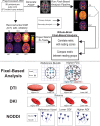
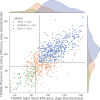
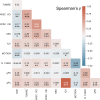

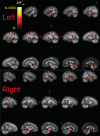
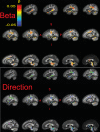


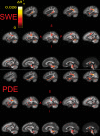

Similar articles
-
Understanding Cognitive Aging Through White Matter: A Fixel-Based Analysis.Hum Brain Mapp. 2024 Dec 15;45(18):e70121. doi: 10.1002/hbm.70121. Hum Brain Mapp. 2024. PMID: 39720841 Free PMC article.
-
A large-scale investigation of white matter microstructural associations with reading ability.Neuroimage. 2022 Apr 1;249:118909. doi: 10.1016/j.neuroimage.2022.118909. Epub 2022 Jan 14. Neuroimage. 2022. PMID: 35033675 Free PMC article.
-
White matter correlates of reading subskills in children with and without reading disability.Brain Lang. 2023 Jun;241:105270. doi: 10.1016/j.bandl.2023.105270. Epub 2023 May 2. Brain Lang. 2023. PMID: 37141728
-
White matter microstructural differences identified using multi-shell diffusion imaging in six-year-old children born very preterm.Neuroimage Clin. 2019;23:101855. doi: 10.1016/j.nicl.2019.101855. Epub 2019 May 4. Neuroimage Clin. 2019. PMID: 31103872 Free PMC article.
-
A qualitative and quantitative review of diffusion tensor imaging studies in reading and dyslexia.Neurosci Biobehav Rev. 2012 Jul;36(6):1532-52. doi: 10.1016/j.neubiorev.2012.04.002. Epub 2012 Apr 17. Neurosci Biobehav Rev. 2012. PMID: 22516793 Review.
Cited by
-
White matter micro- and macrostructural properties in midlife individuals at risk for Alzheimer's disease: Associations with sex and menopausal status.bioRxiv [Preprint]. 2025 Jun 13:2025.06.09.658686. doi: 10.1101/2025.06.09.658686. bioRxiv. 2025. PMID: 40661344 Free PMC article. Preprint.
-
White matter microstructural plasticity associated with educational intervention in reading disability.Imaging Neurosci (Camb). 2024;2. doi: 10.1162/imag_a_00108. Epub 2024 Feb 28. Imaging Neurosci (Camb). 2024. PMID: 38974814 Free PMC article.
-
Reading and White Matter Development: A Systematic Review of Neuroplastic Changes in Literacy.Children (Basel). 2025 May 30;12(6):710. doi: 10.3390/children12060710. Children (Basel). 2025. PMID: 40564668 Free PMC article. Review.
-
How does SES influence the brain circuitry for literacy? Modeling the association between SES, oral language, white matter integrity, and reading.Dev Cogn Neurosci. 2025 Jun;73:101561. doi: 10.1016/j.dcn.2025.101561. Epub 2025 Apr 24. Dev Cogn Neurosci. 2025. PMID: 40319671 Free PMC article.
-
Math skills and microstructure of the middle longitudinal fasciculus: A developmental investigation.PLoS One. 2025 Jun 11;20(6):e0324802. doi: 10.1371/journal.pone.0324802. eCollection 2025. PLoS One. 2025. PMID: 40498707 Free PMC article.
References
-
- Al Dahhan NZ, Halverson K, Peek CP, Wilmot D, D’Mello A, Romeo RR, Meegoda O, Imhof A, Wade K, Sridhar A, Falke E, Centanni TM, Gabrieli JDE, Christodoulou JA. Dissociating executive function and ADHD influences on reading ability in children with dyslexia. Cortex; a Journal Devoted to the Study of the Nervous System and Behavior. 2022;153:126–142. doi: 10.1016/j.cortex.2022.03.025. - DOI - PubMed
-
- Alexander LM, Escalera J, Ai L, Andreotti C, Febre K, Mangone A, Vega-Potler N, Langer N, Alexander A, Kovacs M, Litke S, O’Hagan B, Andersen J, Bronstein B, Bui A, Bushey M, Butler H, Castagna V, Camacho N, Chan E, Citera D, Clucas J, Cohen S, Dufek S, Eaves M, Fradera B, Gardner J, Grant-Villegas N, Green G, Gregory C, Hart E, Harris S, Horton M, Kahn D, Kabotyanski K, Karmel B, Kelly SP, Kleinman K, Koo B, Kramer E, Lennon E, Lord C, Mantello G, Margolis A, Merikangas KR, Milham J, Minniti G, Neuhaus R, Levine A, Osman Y, Parra LC, Pugh KR, Racanello A, Restrepo A, Saltzman T, Septimus B, Tobe R, Waltz R, Williams A, Yeo A, Castellanos FX, Klein A, Paus T, Leventhal BL, Craddock RC, Koplewicz HS, Milham MP. An open resource for transdiagnostic research in pediatric mental health and learning disorders. Scientific Data. 2017;4:170181. doi: 10.1038/sdata.2017.181. - DOI - PMC - PubMed
Publication types
MeSH terms
Grants and funding
LinkOut - more resources
Full Text Sources
Miscellaneous

